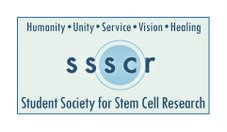In vivo autologous recellularization of a tissue-engineered heart
valve: Are bone marrow mesenchymal stem cells the best candidates?
Andre Vincentelli, MD, PhDa,b,c,*, Fabrice Wautot, MDa,b,c, Francis
Juthier, MDa,b,c, Olivier Fouquet, MDa,b,c, Delphine Corseaux,
PhDa,b,c, Sylvestre Marechaux, MDa,b,c, Thierry Le Tourneau, MD,
PhDa,b,c, Olivier Fabre, MDa,b,c, Sophie Susen, MD, PhDa,b,c, Eric
Van Belle, MD, PhDa,b,c, Frederic Mouquet, MD, PhDa,b,c, Christophe
Decoene, MDc, Alain Prat, MDa,b,c, Brigitte Jude, MD, PhDa,b,c
a Inserm, ERI-9, Lille, France
b Université de Lille 2, Faculté de Médecine, EA2693, Lille, France
c Centre Hospitalier Régional Universitaire, and the Departments of
Cardiovascular Surgery, Cardiology, and Hematology, Lille, France.
Received for publication November 2, 2006; revisions received April
5, 2007; accepted for publication May 2, 2007.
* Address for reprints: Andre Vincentelli, MD, PhD, Clinique de
Chirurgie Cardiovasculaire, Hôpital Cardiologique, 59037 Lille cedex,
France. (Email: a-vincentelli@
Objective: Bone marrow stem cells, especially the mesenchymal stem
cell subpopulation, have been used to create in vitro tissue-
engineered heart valves. We hypothesized that autologous bone marrow
cells, injected in a decellularized porcine scaffold before surgical
implantation, could promote in vivo recolonization and limit valve
deterioration. We thus analyzed the effects of in situ injection of
autologous bone marrow mononuclear cells and of mesenchymal stem
cells on the outcome of xenogenic decellularized scaffolds in a lamb
model.
Methods: Decellularized porcine pulmonary valves were implanted in
the pulmonary artery under cardiopulmonary bypass in 14 lambs after
injection in the scaffold of autologous bone marrow mononuclear cells
(BMMC) group (n = 7) or of mesenchymal stem cells (MSC) group (n =
7). At 4 months, valve function was evaluated by echocardiography,
and valves were explanted for macroscopic and histologic analysis.
Results: Mean transvalvular and distal gradients (millimeters of
mercury) were lower in the MSC than those in the BMMC group (1.3 ±
0.39 vs 4.24 ± 0.91 and 4.05 ± 1.89 vs 12.02 ± 6.95, respectively; P
< .02). Histologic examination showed significant recolonization and
re-endothelializati
thickening and inflammatory cell infiltration were observed in the
BMMC group. By contrast, valves from the MSC group displayed
extracellular matrix and cell disposition close to those of native
pulmonary valves.
Conclusions: Tissue-engineered heart valves created from mesenchymal
stem cells, injected directly in a decellularized xenograft scaffold,
exhibited satisfactory hemodynamic and histologic aspects after 4
months. Further long-term studies are needed to demonstrate the
potential of mesenchymal stem cells for clinical application in heart
valve surgery.
Abbreviations and Acronyms DPPV = decellularized porcine pulmonary
valve; HBSS = Hanks balanced salt solution; BMMC = bone marrow
mononuclear cell; MSC = mesenchymal stem cell; VTI = velocity time
integral; VWF = von Willebrand factor
elated Article
Discussion
J. Thorac. Cardiovasc. Surg. 2007 134: 431-432. [Extract] [Full Text]
J Thorac Cardiovasc Surg 2007;134:424-
© 2007 The American Association for Thoracic Surgery
«¤»¥«¤»§«¤»¥«¤»§«¤»¥«¤»«¤»¥«¤»§«¤»¥«¤»§«¤»¥«
¯¯¯¯¯¯¯¯¯¯¯¯¯¯¯¯¯¯¯¯¯¯¯¯¯¯¯¯¯¯¯¯¯¯¯¯¯¯¯¯¯¯¯¯
StemCells subscribers may also be interested in these sites:
Children's Neurobiological Solutions
http://www.CNSfoundation.org/
Cord Blood Registry
http://www.CordBlood.com/at.cgi?a=150123
The CNS Healing Group
http://groups.yahoo.com/group/CNS_Healing
____________________________________________
«¤»¥«¤»§«¤»¥«¤»§«¤»¥«¤»«¤»¥«¤»§«¤»¥«¤»§«¤»¥«
¯¯¯¯¯¯¯¯¯¯¯¯¯¯¯¯¯¯¯¯¯¯¯¯¯¯¯¯¯¯¯¯¯¯¯¯¯¯¯¯¯¯¯¯
Change settings via the Web (Yahoo! ID required)
Change settings via email: Switch delivery to Daily Digest | Switch format to Traditional
Visit Your Group | Yahoo! Groups Terms of Use | Unsubscribe
__,_._,___










